One of the seven natural wonders of the world, the Great Barrier Reef is the largest coral reef system on Earth. However, there is more to this incredible underwater wonder than just its mammoth size. Dive in and discover eight incredible facts about the Great Barrier Reef!
The Great Barrier Reef Is the Largest Living Structure on Earth
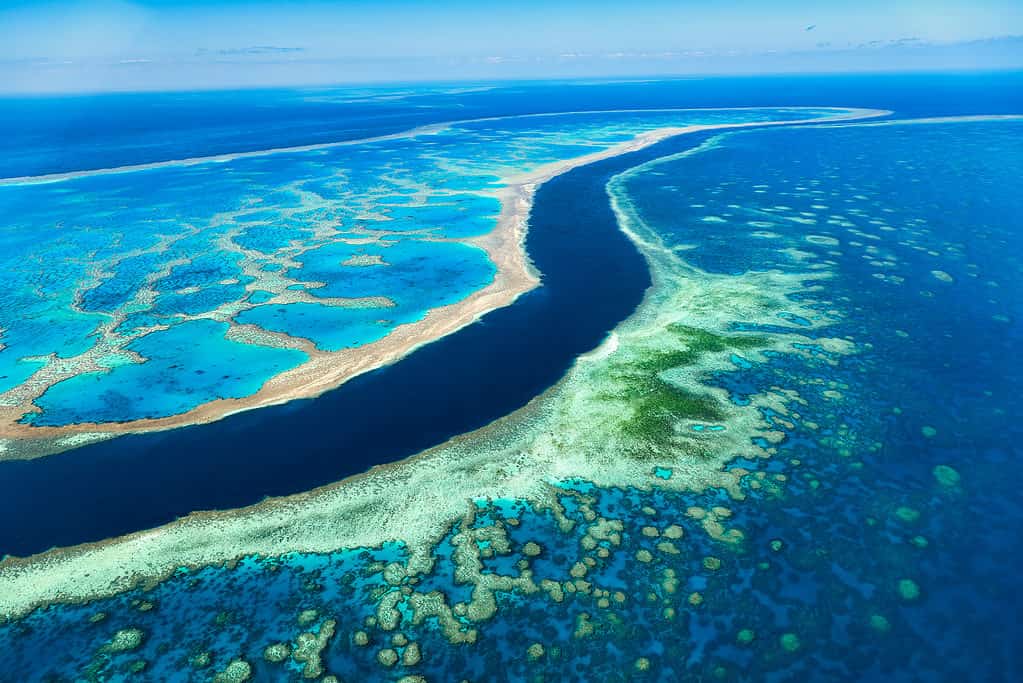
The Great Barrier Reef is so expansive that you can even see it from space!
©iStock.com/Cavan Images
Stretching for more than 1,600 miles along the coast of Australia, the Great Barrier Reef is the largest living structure on Earth. That’s right, it’s made entirely by living organisms! Built by billions of coral polyps, the Great Barrier Reef covers 133,000 square miles and is so big that you can even see it from outer space! These tiny animals attach themselves to hard surfaces like submerged rocks, where they form hard skeletons by secreting calcium carbonate. Generations of these coral polyps have collected over time to form the Great Barrier Reef we see today.
The Great Barrier Reef Is Very, Very Old

Finger coral is a hard, stony coral that lives in the Great Barrier Reef.
©Jolanta Wojcicka/Shutterstock.com
The Great Barrier Reef is at least 500,000 years old! This ancient structure began to form during the Last Glacial Maximum. For hundreds of thousands of years, it has been taking shape and shifting. The structure we see today — which is around 6,000 to 8,000 years old — covers this underlying fossilized framing.
The Great Barrier Reef Is Made of Thousands of Reefs
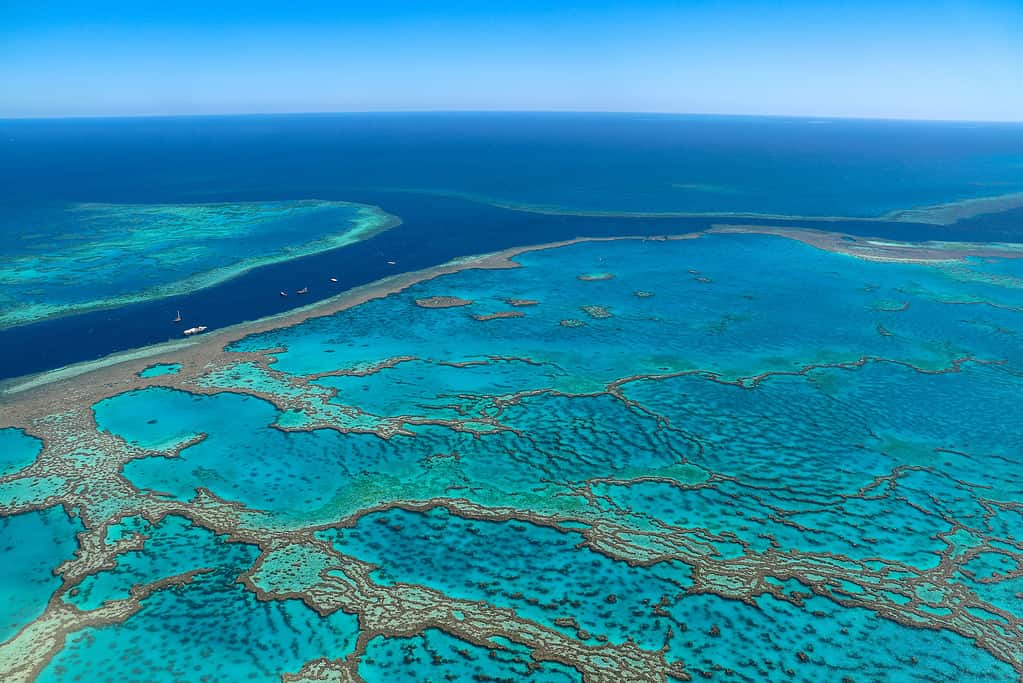
There are more than 100 islands within the Great Barrier Reef.
©Luisa Trescher Photos/iStock via Getty Images
Although we call it the “Great Barrier Reef”, it is actually composed of nearly 3,000 individual reefs. There are crescentic reefs (which are shaped like crescents) in the middle and flat or planar reefs in the northern and southern sections. Narrow ribbon reefs wind through the northern sections, along with deltaic reefs. There are also lagoonal reefs in the southern part of the Great Barrier Reef; occasionally, you may even see fringing reaches attached to the mainland.
There Are Hundreds of Coral Species Living in the Great Barrier Reef
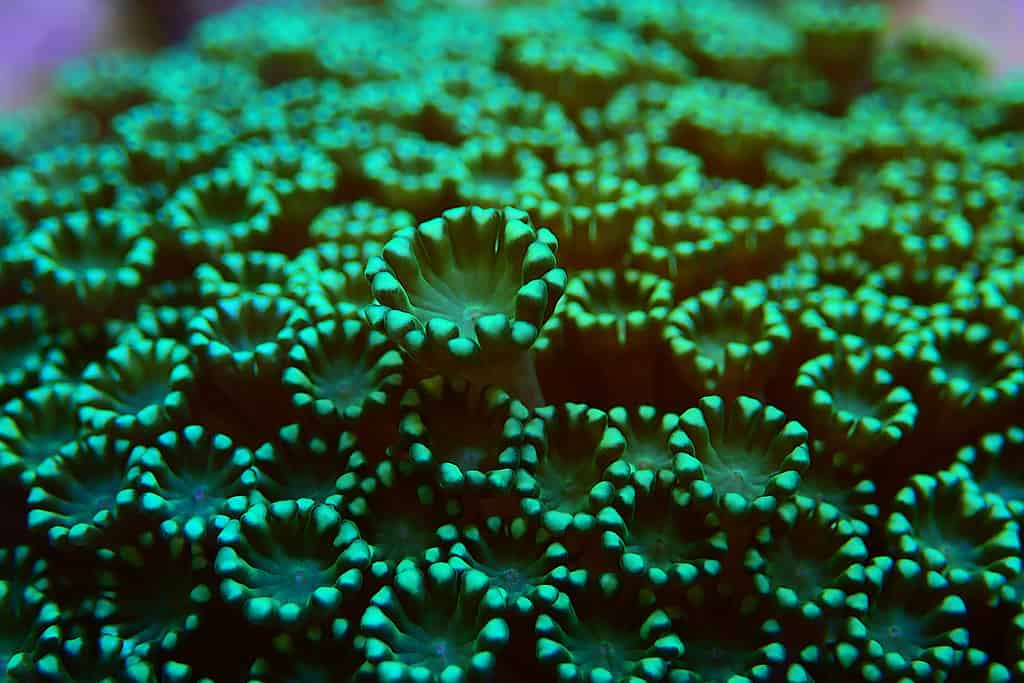
Flowerpot coral colonies can grow several yards across and are typically found in the upper reef
©vojce/iStock via Getty Images
Despite its plant-like appearance, coral is actually an animal. It is related to jellyfish and anemones and has stinging tentacles to catch prey and to protect itself. There are countless different types of coral throughout the world, ranging from soft or hard to tall, flat, colorful, or decorative. The Great Barrier Reef is home to three-quarters of all coral living on Earth today, with an astounding 800 different species of coral within its borders!
The Great Barrier Reef Is a Smorgasbord of Biodiversity
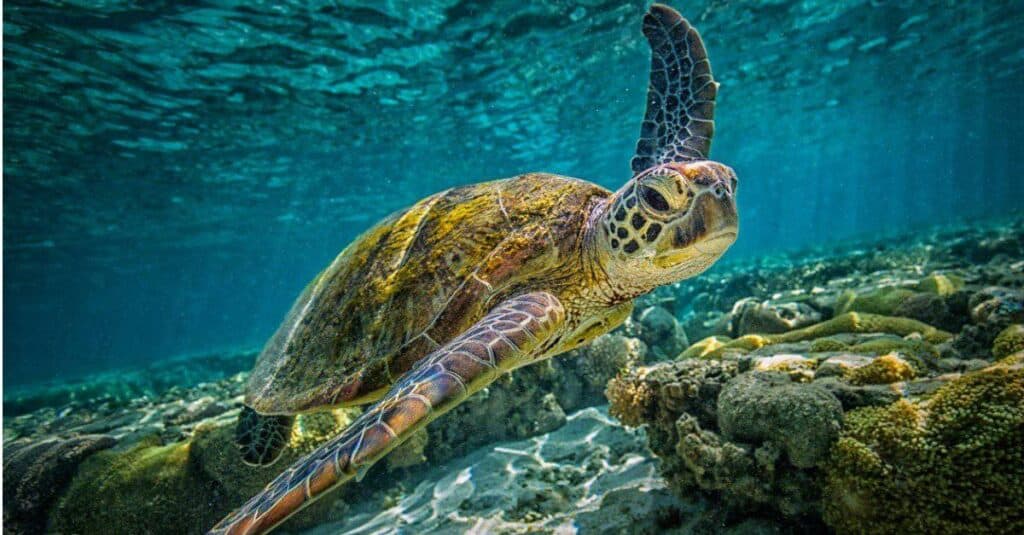
Endangered green sea turtles are one of the many animals that live in the Great Barrier Reef.
©iStock.com/Greg Sullavan
In addition to a plethora of coral creatures, the Great Barrier Reef is also home to thousands of other plant and animal species — some so unique that they cannot be found anywhere else! For example, at least thirty species of dolphins, porpoises, and whales have been spotted in the Great Barrier Reef, as well as 130 types of sharks and rays. 17 species of sea snakes live here, along with six of the seven species of sea turtles, 5,000 species of mollusks, and 1,600 species of fish! The Great Barrier Reef is also home to dugongs that feast on the many different types of seagrass here, and there are even saltwater crocodiles that hang out on the nearby coasts.
The Great Barrier Reef Is a Symbiotic Superstar
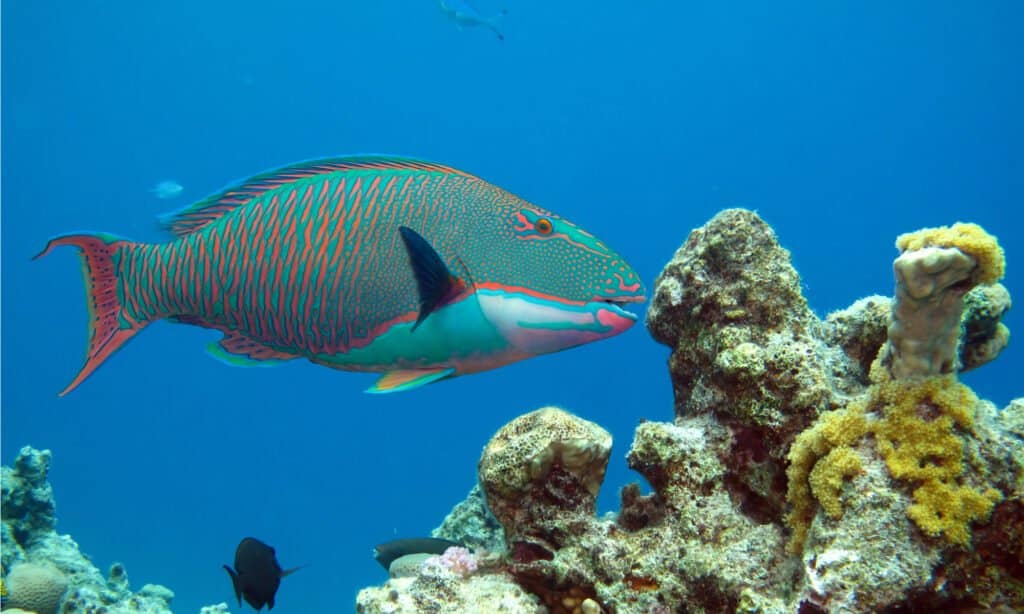
The algae growing on the coral of the Great Barrier Reef protects it and allows it to thrive.
©Cigdem Cooper/Shutterstock.com
Symbiosis is a unique relationship between two different species, wherein one or both benefit in some way. One of the most well-known examples (thanks to Disney’s Finding Nemo), is the relationship between sea anemones and clown fish. Several of these types of interactions occur daily within the Great Barrier Reef.
However, the true symbiotic superstars of the Great Barrier Reef are coral and algae. Tiny microscopic algae (zooxanthellae) make their homes in and on the coral. The algae transforms solar energy from the sun into food and oxygen through photosynthesis and shares it with its coral host. In addition, the algae produces unique fluorescent chemicals that help protect coral from the sun’s harmful rays. In return, the coral shares nutrients with the algae and protects it from danger.
The Great Barrier Reef Is a Natural Life Support System
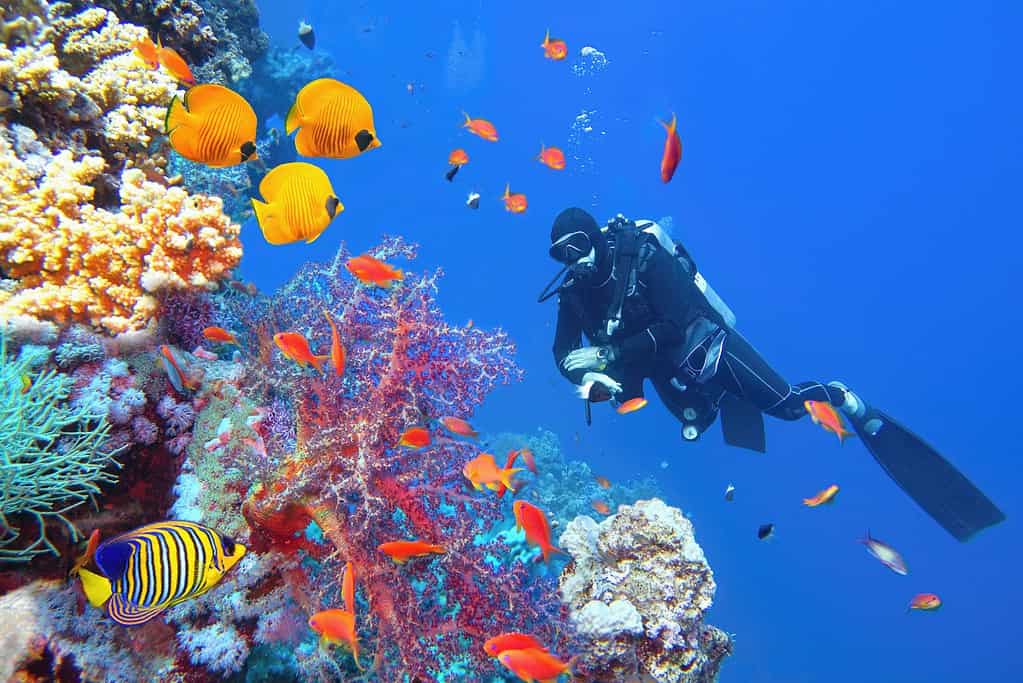
Coral reefs are crucial to the health of our oceans.
©Tunatura/iStock via Getty Images
Another incredible fact about the Great Barrier Reef is that it is home to a quarter of all ocean life. That’s right, 25% of the ocean’s spectacular creatures rely on this giant reef for survival! The Great Barrier Reef also acts as a natural barrier, shielding the coastline from crashing waves and storms. It is also an enormous natural filter, cleaning the water, removing sediment, and absorbing carbon dioxide from the air. In addition, it serves as a lifeline for millions of people around the world, providing jobs and food through fishing and tourism.
The Great Barrier Reef Is in Serious Danger
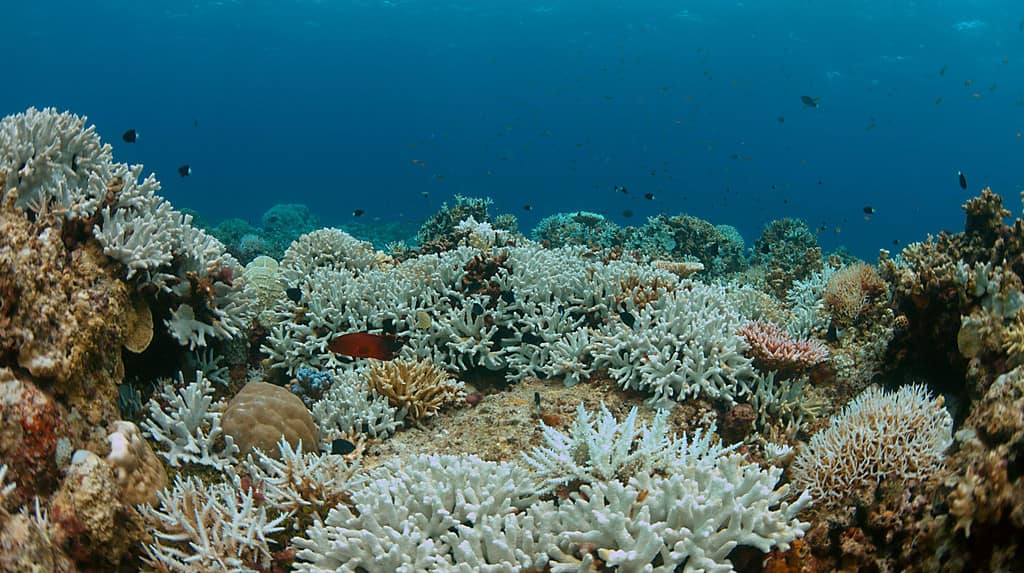
Coral bleaching causes these creatures to become completely white and extremely weak.
©Sabangvideo/Shutterstock.com
Pollution, human development along the coast, chemical runoff, and overfishing are reducing the biodiversity of the Great Barrier Reef. In addition, as ocean temperatures rise due to Climate Change, they threaten the symbiotic relationship between coral and algae. The rising temperatures cause the algae to produce new substances, which unfortunately are toxic to their coral partners. The coral are forced to kick the algae out but this leaves them in a very vulnerable state. Without the algae to feed and protect them, coral become extremely stressed and undergo “bleaching”. Many of the precious coral in the reef, sadly, cannot survive this process.
The Great Barrier Reef faces natural threats as well. Storms and cyclones cause extensive damage to the reef, and it can take decades to recover. The crown-of-thorns starfish (Acanthaster planci) is extremely detrimental to the reef as well. These venomous animals eat coral, and during outbreaks, they can decimate entire sections of the reef.
Despite these monumental threats, there is still hope for the Great Barrier Reef, but human intervention is critical. Fortunately, many people around the world are working together to protect this iconic ecosystem.
The photo featured at the top of this post is © Luisa Trescher Photos/iStock via Getty Images
Thank you for reading! Have some feedback for us? Contact the AZ Animals editorial team.






